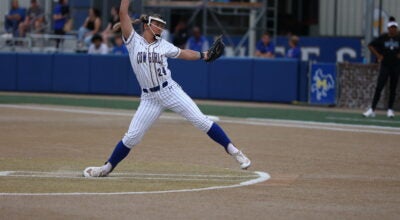Gulf of Mexico states fight feds over fisheries
Published 2:28 pm Tuesday, May 14, 2013
NEW ORLEANS (AP) — Red snapper, one of the most popular fish in the Gulf of Mexico, are the biggest and most plentiful in years, but the red snapper season in federal waters keeps getting shorter.
On Tuesday, a branch of the National Oceanic and Atmospheric Administration rejected the Gulf of Mexico Fisheries Management Council’s request for a 22-day recreational season across the Gulf Coast rather than seasons varying by state.
This year’s federal recreational season is nine days off of Louisiana, 12 for Texas, 21 for Florida and 28 for Mississippi and Alabama. Those spans were set to give anglers across the Gulf an equal chance, because seasons in state waters vary widely, regional administrator Roy E. Crabtree wrote in a letter.
Texas keeps its waters open year-round. Louisiana’s 88-day season runs every weekend from March 23 through Sept. 30 — though it can be cut short if the quota is filled earlier. Louisiana also lets anglers keep three red snapper rather than the federal limit of two. Florida has a 44-day season starting June 1. Mississippi and Alabama matched the federal season.
“I know that fishermen are frustrated and dissatisfied with the progressively shorter fishing seasons,” Crabtree wrote in an emailed statement. “The red snapper population is rebuilding and that’s a good thing. Now we need to be creative and make some tough decisions that will enable all fishermen to share in the hard-earned benefits provided by this growing population.”
Legislators and members of Congress are demanding that NOAA loosen up. The governors of Louisiana, Mississippi, Texas and Florida recently wrote to U.S. House and Senate leaders, citing the shortened recreational season and a range of seasons as reasons fisheries management should be turned over to states.
“We believe this confusing management is just the latest evidence of a federal management system that is irretrievably broken,” they wrote.
“Broken” is a word that Randy Pausina, assistant secretary of the Louisiana Department of Wildlife and Fisheries and the state’s top fisheries official, uses often about the system. “It looks good on paper … but the practicality is it doesn’t work,” he said.
Louisiana and Texas have also sued to block NOAA Fisheries from regulating the length of the red snapper recreational fishing season in federal waters off their coasts.
And Louisiana officials have claimed jurisdiction over more than triple the coastal waters set out in federal law. But anglers who follow that are getting tickets that can cost them up to $1,000 per fish.
The fisheries management council has proposed letting states set seasons and bag limits next year.
The total recreational and commercial quota was cut in 2007 from 9.1 million pounds to 5 million pounds but has risen steadily since. The proposed 2013 quota is 8.46 million pounds, up from last year’s 8 million.
Commercial boats are regulated differently: Each gets an individual quota.
So are charter boat captains. They must abide by the federal season and limit even in state waters, or risk losing federal licenses. The fisheries management council asked NOAA Fisheries to change that part of the rules. It also was turned down Tuesday.
Texas has a longer federal season than Louisiana because most of its landings are from chartered boats, while most of Louisiana’s are by private anglers, NOAA Fisheries spokeswoman Kim Amendola said.
Crabtree said there were several reasons to cut recreational seasons in federal waters even as the total allowed catch is rising.
The recreational quota fills fast because anglers are catching bigger fish and over a wider area of the Gulf than they used to, Crabtree said.
“I live in the Tampa Bay area. Fifteen years ago, we had very, very few red snapper in this area and down the west coast of Florida. Now we have a lot of red snapper all the way down to the Florida Keys,” he said.
The fish are about twice as big as in 2005-06, now averaging 8 pounds, he said.
Pausina said creel checks this season show the feds are wildly overestimating the catch rate off Louisiana.
NOAA Fisheries doesn’t have enough agents to make good estimates, he said. “Their margins of error are enormous. For an individual state they might say the catch is 1 million pounds, but the margin of error’s around 25 to 30 percent. It might be 700,000 to 1.3 million pounds. … You can’t manage a fishery on that.”
He said his agents have stopped hundreds of boats and measured thousands of fish this year. Their creel checks indicate that anglers have caught about 42 percent of the total NOAA expected by May 6 — 3,874 fish rather than 9,240, he said.
Some of those weekends were too stormy to fish.
“That’s the whole point. They projected and we do it real time,” Pausina said.
(mgnonline.com)





